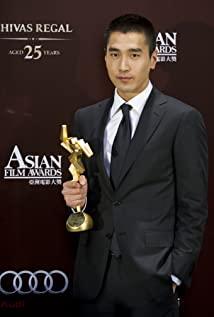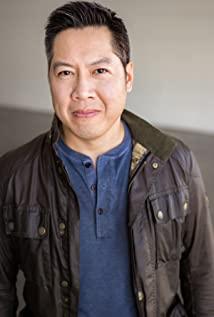This article contains serious spoilers, if you haven't read it, proceed with caution. Those who have seen it and want to discuss the plot are welcome to read it. The film does have shortcomings (will be mentioned in the text), but there are really no plot bugs. If you can't understand why Suzaku has wings, it may not be suitable for watching oriental fantasy works. Five stars in order to balance the crazy one-star attack.
Open your mind to enter the world of Onmyoji.
"Qing Ya Ji" is adapted from the "Onmyoji" series of novels by Meng Pillow Tapir. I described the novel this way:
"Onmyoji" integrates Japanese historical figures, Japanese four seasons, Japanese shamanic culture, ancient Chinese and Japanese myths, ancient Chinese poetry, Buddhism, modern and modern Western linguistics and aesthetic theories, etc., in short chapters and colloquialization Behind the expression, it can be said to be all-encompassing. The best-selling secret of "Onmyoji" may be that it borrows other people's aesthetic theories on the inside, and the outside is covered with the entertainment of ghosts and ghosts. The "retro" of "Onmyoji" also has a background of the times, and the core idea is modern. It can also be said to be a clever way to connect ancient and modern Chinese and foreign cultures.
The adaptation of Seiyaji may disappoint readers (such as me) who value the philosophical part of the novel more than the ghostly content. But not incomprehensible. If it is to be adapted into a commercial film, it is indeed impossible to talk about what a curse is. The "Qing Ya Ji", in which the Dream Pillow Tapir personally participated in the screening of the script, directly removed those contents that were more suitable for discussion in novels, greatly reducing the difficulty of understanding. A complete story is connected with several small stories. In addition to promoting the development of the plot, each small story is also a "stepping stone" for the emotional sublimation of Seimei and Boya. And cleverly moved the place where the story takes place to the eastern capital, so that it is suitable for Chinese actors to play. The cherry blossoms in the original book (there are ghosts under the tree) have become plum blossoms that are more in line with China's national conditions (repeatedly, they are not peach blossoms, they seem to be fake flowers), and the semiotics are in line with Chinese traditions such as yin and yang, five elements, and heaven and earth (traveling graphics). It is a five-pointed star and a circle, and there is also a Bawen, which is a god pattern in Japan, in the film. There is nothing wrong with it, it has nothing to do with Marvel, everyone is just borrowing from their ancestors). Seimei is from Japan and follows the characteristics of Japanese costumes. The princess is a Chinese costume. Takiya's costume from southern Xinjiang has more exotic characteristics, and all of them have been re-localized.
What happens when this adaptation involves characters? for example. Although the Japanese royal noble Boya was still a samurai in the film, but the young boy left home to slay demons and demons, and became a real samurai who needed to fight on the street. When a group of people called him "Big Brother", readers of the original book may be surprised. But this adaptation of the film, Dream Pillow Tapir, agreed. We don't know what the reason is. Maybe it's because apart from these changes made to fit the movie, the character and the relationship between the characters haven't changed. For example, Boya is interpreted very vividly, as lovely as the Boya in the book. "I was born with a straight face, but there is an indescribable cuteness in my expression." ("The Lord of Kurokawa" - "Volume 1"). In the book, he will be pouting, he will be angry after being scolded, and he will speak with a bit of anger (ah, ah, oh), and Boya, who acts first and then thinks about things, is alive. In the author's opinion, Boya is a "rare treasure in the world" ("Ocarina of Ghosts" - "Sheng Ji"). Deng Lun said that he wanted to bring the purity of liberal arts to the audience. And pure is precisely the biggest characteristic of Boya, and it is also the most difficult to act.
I once concluded, "Onmyoji provides two paths for life. One path is taken by Seimei, who has extremely high wisdom, sees through the good and evil in the world, and is omnipotent and omnipotent. The other path is taken by Boya. I don't understand anything. My mouth is faster than my hands, and my hands are faster than my brain. I will be myself, but I can feel it. Boya blows a wonderful flute, but he doesn't know the meaning behind it. Boya has the ultimate purity. "Onmyoji" "Through the harmonious and long-lasting relationship between Seimei and Boya, which is inseparable from each other, it shows that these two paths are mutually attractive and can be passed through."
Natural and wild courtyard (the building of Seimei’s house in the film is too high-end, I thought it was upgraded to a luxurious courtyard, but the plants are arranged in line with the characteristics of natural wildness, which is a crucial setting), Seimei and Boya “are placed between the two of them. Half a bottle of wine and a saucer, grilled sweet fish with stone sprinkled with salt in the saucer. There is a lamp beside the saucer, and a flame is swaying." ("The Lord of Kurokawa" - "Volume 1"), the honey bug who brought tea and water, Drinking green plum wine early in the morning, Seimei seems to be idle most of the time, and there are nostalgic allusions.
Because the characters' personalities remain unchanged, the film also has a lot of bickering between Seimei and Boya in the first half, and a lot of fights in the second half. You can think that Seimei and Boya are still familiar Seimei and Boya, and the movie is just another demon hunting experience between Seimei and Boya.
In particular, Seimei and Boya in the movie are the current age of the actors, not the age of Seimei in the original book after he has established his own business and became confidants with Boya (in some chapters of the book, Boya is already 35).
1 Mysterious Elephant
The first short story is that the killing stone who stole the mysterious elephant heard the sound of Boya's flute, and Boya appeared here. This story also reflects the popularization tendency of film adaptation from the very beginning. In the original book, this idiot is Khan Duotai from Tianzhu. He was also a musician before his death. He sneaked into the palace and admired a female official who looked like his wife. "I could use the power of ghosts and gods to take the female official as my own, but I couldn't bear it. So I took the next step, took the mysterious elephant, and remembered the past and my wife Sydney, and played the lute to soothe my soul. "("The Treasure of Pipa and Mysterious Elephant Was Stealed by Ghosts" - "Volume 1") The killing stone came to hear the sound of the flute, because in the original book, the sound of Boya's flute is so beautiful in the world that it can make all human beings, demons, gods and gods feel the same. Be moved by it. Boya's ghost flute, Ye Er, was also given by the ghost after he played the flute at Suzakumen under the bright moon. Boya doesn't actually need to beheaded when he encounters a demon, as long as he plays the flute, the demon is already obedient. The thief put down the butcher's knife, the thief returned the lost property, and the gods danced. This is a very wonderful place in the novel, and the contrast between Seimei and Boya is symbolic (explained above, the wise and the pure). But maybe the director dared to shoot like this, and Kenji Kawai also wanted to "protest". This song is too difficult to compose. In the movie, Boya's mother was killed by the fox demon, and Boya was obsessed with killing the demon. And Seimei is the son of the fox demon, and the two have contradictory values. Seimei not only did not kill the demon, but also stepped forward to save the killing stone, saying that the demon also has feelings. The first time the two met in a flirtatious fight, the killing stone was able to escape, and the mysterious elephant did not bounce. The huge changes in Boya's life experience have made the conflict more direct, pointing at how to see other creatures other than humans (similar to the X-Men's equal rights theme), which has nothing to do with the original discussion of curses.
2 Gu worms
Seimei expelling Gu insects is a famous scene. In the film, Seimei traces anecdotes in the city and traces the Gu insect (called Nian Nian in the film) into the princess's bedroom. Who put the Gu worms? Could it be Takiya who used Gu insects and suspected and watched the princess from the beginning? Perhaps it is to pave the way for the second "Taki Nocturne"? After all, Takiya's motive was the thread that was thrown out, and it was not taken back.
Before he could investigate, Boya staged a good show to rescue Seimei. In a passive scenario, the two begin to try to build trust. Here, the naive Boya saw the princess undress and turned around shyly, but couldn't tell whether it was Seimei who was talking to him, or Seimei who was temporarily controlled by Gu insects. It was really cute.
3 hair demon
The story of Fa Yao has the taste of the original, but it has also been mixed. If the killing stone is the representative of the idiot in the original work, the hair demon is the collective incarnation of the resentful woman. There are many unfortunate stories of being persecuted by heartless people in the original work, such as the famous "Sheng Ji". A woman who has been let down by a heartless man, remains in the world after death and is unwilling to leave, waiting for an opportunity to take revenge, and can even fight for revenge for several lifetimes. For example, the story of the snake demon, "I hate it, I hate it so much that it hurts to breathe. So I turned into a living creature and watched the scene where he had sex with that woman. It was better than the two of us getting along. It made me hate it even more. In the end, I attached to that woman and tortured her to death..." ("The Way of the Snake" - "Firefly Scroll")
In the original book, the hair demon has a move similar to that of a face-hugging bug, "Takako's eyes, nose, and mouth were blocked, and she couldn't breathe. She twisted her body in pain on the floor, and grabbed the hair with her hands. To get rid of it, but to no avail." ("Tangling Ghost" - "Second Volume") In addition, the hair demon can also be wrapped around the human body for slow strangulation. The hair demon in the film is more aggressive and can be directly wrapped around the neck and killed.
In the film, in order to adapt to the main story, the resentment of the hair demon was left, which changed the experience of the hair demon. She died 60 years ago. Fa Yao loves the painter in the palace, but the painter loves the queen (later princess), and the painter kills Fa Yao to show his sincerity (the painter may be the queen's last lover). Later, Fa Yao was accepted by Shouyue as a shikigami (the shikigami can be operated as long as the mage knows the name of the other party without consent), and Fa Yao was controlled by Shouyue until Shouyue was controlled by Zhongxing's talisman. The first time he was able to move freely, he immediately went to kill the princess, and was freed to escape. The hair demon who completed his revenge still sighed with great regret. The story of the demon made Seimei discover that the princess is immortal and realize that what Takiya said "before she died" was "the queen is the princess". Takiya's death was a smooth fight and showed where everyone stood. At this time, Seimei and Boya had different positions. The confrontation between Seimei and Boya after the fight is equally interesting. Boya thinks that she has played with the princess since she was a child (the princess is now 30 years old, and she entered the palace at the age of 18. Boya is in her twenties, younger than the princess. The first time she met the princess was when Boya was a child), Seimei asked, the princess is so obsessed with her own efforts. Wake up Qinglong, do you really know her? Boya stopped talking. Does Boya really have a lot of contact with the princess? Or was he deceived by his own memory because he got along well? Is favoritism a form of prejudice? Here, Seimei and Boya split up and talk to the princess and Shouyue to verify. The princess stopped Boya’s temptation to Shouyue, taking advantage of Boya’s distraction, Shouyue got the opportunity to kill Boya, but Boya finally just fell asleep on the ground, which shows that the princess did not intend to kill Boya. The previous mage was also killed by Shouyue's manipulation of the hair demon, and the princess didn't even know about it. The real murderer is only Shouyue. But Seimei was very worried about Boya, and from here to the sarcophagus to rescue Boya in the sand, Seimei's rescue paved the way for Boya's willingness to hand over his life to Seimei.
4 White bhikkhunis
The core story of the film is taken from "White Bhikkhuni" ("Volume 1"), in which it is mentioned that the princess constantly changed her identity and once also worked as a monk or nun, implying the origin of "White Bhikkhuni". The level of visual horror of the story has been reduced, but the story itself is still scary.
In the original book, the evil snake comes every 30 years. The last time was Seimei Master Zhongyuki slashing the evil snake with a knife, and this time it was Seimei's turn. White Bhikkhuni has eaten mermaid meat and will not grow old. She "keeps her 20-year-old face forever", she "lives by selling her body to men", "that woman's body cannot be pregnant. She has accepted it for thirty years. The sperm that can't get pregnant, combined with the years that can't get old in the body, become a woeful snake." The original setting was too exciting (it may not pass the trial), and the movie was adjusted to the legend that the princess ate the mermaid meat, so she could Immortal. She uses her body as a container for the immortal and inextinguishable evil snake. Because the evil snake can provide eternal power, the princess is immortal and kills the evil snake every sixty years. The birth process of the evil snake is very "cult" in the original book (not expanded here), and it is simplified in the movie, but the key link is retained: "That thing came out of the thigh. A black snake came out of a woman's thigh. poking his head out." A slightly religious demon's incarnation process (analogous to a virgin's pregnancy giving birth to Jesus). You have to wait for all the snakes to come out (to complete the "production"), and then kill them with a knife (to strangle the demon in the cradle).
In the movie, there are two times when the woeful snake descends. The first loyal act was the one who cut snakes. Because it seems calm, it is presumed that it went well, and the snake was successfully beheaded when it was very young. At that time, the princess was still the empress (the original work of "Onmyoji" has a certain time span. This film is set in the period of the Second Empire of China, and it almost follows the time of the original work. You can think that the empress is Wu Zetian, after all, she also became a monk, but obviously Not the same thing), Zhongxing and the princess are both in love. But the princess can't be emotional. The evil snake makes a living by devouring lust (it has been upgraded from the semen of the original book to a non-materialized lust). In the film, when the princess hears Takiya mention the name of Zhongyuki, she is moved a little, and the evil snake in her body receives provisions (" Fetal movement"), all things immediately swam towards the princess. For this reason, Zhongyuki had to leave the princess. But Zhongxing loved the princess, so he used his emotions before the age of 20 to pour out a Shikigami Shouyuki, who was as deep as his mana.
Guo Jingming said that the original character of Shouyue was inspired by an unpublished science fiction novel (which means that it is impossible to verify). If there was only one left between artificial doubles and people, how would you choose? When the second calamity came, it was no longer Zhongxing who "delivered" the princess, but Shouyue. Shouyue was about to dissipate because of Zhongxing's death (Zhongxing's other shikigami are monsters with independent living bodies and will not dissipate. Before Zhongxing's death, he gave all the shikigami's runes to Seimei and completed the handover. But Shouyue is man-made "Paper Man", different species). It was rumored that the princess had eaten mermaid meat and lived forever. Shouyue believed that the princess could live forever without harming snakes. If the evil snake enters his body, he gains the ability of immortality, so he can continue to carry out the task given to him by Zhongyuki: protect Fangyue (princess) forever. But the princess thinks that she has lived too long, and the people she loves are old, dead, and forgotten, and she wants to die. After the evil snake left her body, she could not only satisfy her wish to keep the moon and live forever, but also her own wish to die. Unexpectedly, Shouyue has greater ambitions (here is a little reference to the setting of "Mermaid Legend". Some people can live forever by eating mermaid meat, while some people will become monsters. After the princess swallowed the evil snake, everything was the same as before. , Even the princess herself is a mortal and has no spells. Shouyue grew snake scales and became a monster. The evil snake has different mutations under the control of different people). When the princess woke up from her nostalgia for Zhongxing and decided to commit suicide, Shouyue asked in surprise, aren't you immortal, are you lying to me (Shouyue thought that the princess hid the fact that she could actually die). The princess said that I never lied to you (Shouyue may not have discussed the mermaid with the princess face to face when she was planning, and the princess was immortal by default). The princess asked if you had lied to me (for example, Shouyue did not get the approval of the princess for killing the two mages, and also lied that the hair demon had mishandled and wanted to continue killing Seimei and Boya. And Shouyue did not directly seal the evil snake, nor did Kill the evil snake, but let the evil snake absorb more human desires and become a huge monster, beyond the princess's expectations).
Shouyue's wish is whether we can leave here together, be together forever, and travel the world. And what the princess said was whether we could die together. For people, growing old together and going to Hongmeng together are actually the same. Although the princess and Zhongxing are not together, they are both doing things to protect the common people. Shouyue is just a shikigami of Zhongxing, and to put it bluntly, it is a stand-in. A perfect companion who will never grow old with the same face as a princess. Even if he can only accompany Zhongyong until his own death, it has been 60 years, and Zhongyuki has tried his best. But what Shouyue insists on is not love. Protecting the princess forever has become an obsession, a responsibility, and a task. The princess is obsessed with memories, and her love for Zhongxing has become her obsession. She can give up her life for Shouyue. It's a very twisted emotion. Seimei believes that "to get rid of the impermanent pain of life and death, and to eliminate the confusion in your heart, you can obtain peace of mind. This is the real happiness" ("The Man Riding on the Back of the Green Ghost" - " Volume II: The Phoenix Volume"). But he also admitted, "To really destroy the ghost from the human heart, there is no other way except to destroy the human being." ("Sheng Ji"). Only when the princess dies and Shouyue dissipates, can she be liberated.
In the process of dealing with the evil snake, Seimei and Boya become friends of life and death. Among the four mythical beasts guarding the heavenly capital, since Shouyue was only catching demons (and let Boya and Takiya see them), he did not catch them to wake up Suzaku (why is Suzaku? Maybe because Boya’s moonlight night often blows on the Suzaku gate) Flute, Suzaku is a mythical beast associated with Boya), resulting in the failure of the guardian. Boya wakes up Suzaku with his own flesh and blood, and restarts the protective cover, so that the snake cannot escape from the city. Boya said to Seimei, let me be your shikigami, which means to let the Suzaku awakened by him become Seimei's shikigami under his will, and people can't become a shikigami by themselves (after the calm, Seimei molested Boya and now he is willing to be a shikigami) Now, the stubborn Boya said it was Suzaku). And Boya himself lost too much blood, and was in a state of separation of spirit and flesh, completely unconscious, very dangerous, Seimei refused this kind of operation, but Boya still said and did it. So it doesn't matter if Suzaku Boya died for Seimei to block snake venom, Boya didn't die. If Shouyue finally succeeded in assassinating Boya's body, Boya would die. The flesh in clothes is truly liberal. And Boya, who has a naked upper body and wings, is Suzaku (Will Sun Wukong jump out of a rock to wear a dress? Suzaku and Woe Snake theoretically shouldn't be dressed, the audience needs to accept that Suzaku and Woe Snake are not human).
After Shouyue died of the person she wanted to protect, her first reaction was to attack Boya who gave her a fatal blow, rather than being buried directly. Seimei immediately saw if Boya was awake, and even if he was stabbed and injured, he had to protect Boya first. Shouyue dissipated with obsession, and Seimei, who issued the strongest guardian spell, became the real Onmyoji. It is especially recommended for young people in the middle and second years to watch this film. The theme of juvenile growth, which is very common in teenage commercial films, is secretly carried out in the story of an obsessive man and a woman. In the original work, Seimei's growth is almost not depicted (there is no situation where he can't cast the guardian curse), only he is depicted as a child. , not even afraid of a hundred ghosts walking at night. In a movie, to condensedly show the process of Seimei and Boya from first acquaintance to becoming confidants, another counterpoint is made here. Boya, who has an explosive force, got a script for improving his consciousness (being able to accept demons means no longer paranoid and letting go of his hatred of demons), while Seimei, who had a very "advanced" concept, got a script to upgrade his skills and tactics (there are In order to protect the person, there is love). There is no hate, there is love. In addition to the soundtrack of Kenji Kawai ("Ghost in the Shell"), the special effects of the Korean special effects team ("Snowpiercer", "The Monster of the Han River", "Dragon Hunting", especially recommended "Tian Yuzhi"), China and Japan in the field of oriental fantasy Han's strongest lineup escorts, and the feeling of burning will be there.
5 moon
There's another example of how the movie has changed. For example, the original white bhikkhuni story happened on a snowy day. In other chapters, Boya said that when he encountered such a heavy snow day, he thought of the white bhikkhuni. Seimei said, "When I think of people who haven't heard from them after separation, such a snow is falling in the sky, I suddenly feel that this snow has become cute." ("Ghost Hammer" - "Volume 3") Then everyone looked up. Snow, full of emotion. In the movie, the princess expresses more bluntly that she wants to become a bright moon, replacing the snow with the moon. Boya sent Seimei under a bright moon. In the final screen of the film, Seimei's "traveling gate" is transformed into a moon-like appearance, with the bright moon in the sky and the water sparkling. Looking at this bright moon, Boya will think of the story of the princess, "people who have no news after separation" (such as Seimei). There is a short comment, the water depth of Peach Blossom Lake is thousands of feet, and it is not as deep as Deng Lun's love for me. Seimei once said, "Light has a source of liberal arts, without the moon, there is no beauty. And light has a moon, without a source of liberal arts, and there is no beauty. With a source of liberal arts and the moon, beauty is born." Ghost" - "Tai Chi Volume") The moon and Boya appear at the same time, which is also the ultimate beauty. In the original book, Seimei said this sentence to illustrate that "if beauty exists in the world, there must be someone who appreciates beauty and something to be admired", not to boast about beauty. The movie does not let the characters say that directly, but in the end it is the beauty and the audience who watch it together constitute beauty. Boya is looking at things and thinking about people, while we are looking at people in paintings.
"The so-called mantra can be said to be the man himself. Life itself is the mantra."
Can the depth of "Qing Ya Ji" catch up with the original? Can't catch up. But if I were the Dream Pillow Tapir, would I accept this adaptation? I can.
View more about The Yin-Yang Master: Dream of Eternity reviews











